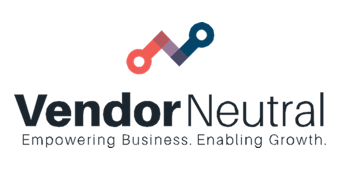How to Drive Employee Engagement and Adoption of Your New Technology
We hear a lot about the importance of employee engagement. But, what does it actually mean? In short, employee engagement is a measure of how emotionally connected your employees are to your company. Instead of just working for a paycheck, engaged employees want the company to succeed and actively contribute to that success.
Are companies succeeding in engaging their employees? One study found that 85 percent of employees are not engaged in their workplace. Lack of engagement has been referred to as a silent epidemic in the workplace. It can slash productivity, decrease employee loyalty and eventually hit your bottom line.
What does engagement have to do with new technology adoption? Engagement directly relates to involvement. To engage employees, make them feel part of the team, like they are working toward a common goal. Workers want to feel like a valued member of the organization. When adopting new technology, engage your employees from the start. Incorporate these three tips to get their buy-in.
Cultivate a Collaborative Environment
Build an atmosphere where input is welcomed and sought after by decision-makers. “Employees engage when they are empowered to explore endless possibilities,” says Forbes magazine. Bring in a cross-section of employees to explore tech opportunities, identify pain points and discuss solutions. Helping employees to see how the new technology will benefit them personally contributes to their buy-in. Engagement involves showing employees how they can contribute to change, and making them feel like they are making a valuable contribution.
Engage employees through every step, including evaluation, selection, deployment and training. Cultivate your collaborative environment by building an atmosphere where employees feel comfortable expressing their opinions. For example, consider hosting “lunch and learn” sessions. These can be effective for both information gathering and training. The informal setting is a great way to build connections and gather input.
Customize Training
“Familiarity with and interest in digital technology varies widely,” says Harvard Business Review. Training for a new technology can’t be one-size-fits-all. While some employees might welcome a quick, online tutorial, others might need one-on-one personal training and continued support. Forcing tech-savvy workers to spend hours in training will lead to frustration. Conversely, trying to teach your non-tech people through a quick, high-tech course will frustrate them. Alleviating stress and creating calmness is very difficult in the onboarding process especially. Get input about what kind of training your staff prefer. Once again, you are engaging your employees because they feel part of the process. They have a say in their training format.
What training options should you give? In almost every situation we have encountered, hours-long lectures are not effective. Employees are not engaged in the process. While employees might pick up theoretical knowledge, they failed to grasp practical application. Remember, engagement involves having an emotional connection, seeing how you fit in the big picture. Training that lacks practical applications fails to engage employees. Consider these interactive methods to design training that boosts engagement.
- Interactive Demos. These could include simulations.
- Gamification. Teach practical applications. Consider including incentives.
- Microlearning Resources. Training is not “one and done.” Consider short videos that address future learning needs.
- Mentoring. Leverage your tech-savvy employees to help struggling employees that might require additional help.
Be sure to make training a priority. That doesn’t mean simply requiring it. Don’t expect overworked employees to fit time into their already busy day. You’ll either end up with frustrated employees or they will put off training because they feel like they need to take care of the work at hand. Allocate time and resources to ensure that training takes place and is well-received.
Set Expectations
We can usually accept change when we know what to expect well in advance. “Setting employee expectations can eliminate or reduce confusion and increase the chances of employees being successful in achieving the goals set for them,” commented Business News Daily. Setting clear expectations will also leave your employees with the impression that the deployment is well-planned and organized, building their confidence in the tech decision. Consider the following elements when setting expectations.
- General Timeline: When will the new technology be deployed? When will employees have to fully switch over? Is the current tool completely going away? If so, when? How long will implementation and training take? Clearly answer these questions, so your employees know what to expect, and can plan for the downtime in their work.
- Deployment Structure: Will deployment be all at once or tiered? Will there be a team of early adopters that can lay a foundation and help the rest of the organization get up to speed? Will you start at the top and work down, or have a bottoms-up deployment?
- Training: What type of training is required? Will different styles be offered? Who will do the training? When should the initial training end? What ongoing training will be offered?
- Rewards: Find ways to reward employees who use the new technology effectively, without punishing the slower adopters. Support the overachievers, and identify those that might need additional resources. Remember, not everyone will learn at the same rate.
Clearly communicate your deployment strategy. When employees know the “who, what, when, where and how” of your roll-out, they are more likely to feel like part of the process. Seriously listen to employee input, building engagement throughout your organization.
Digital transformation is happening. Seventy percent of companies either have a digital transformation strategy in place or are working on one. Engagement is the key to successfully navigating the adoption cycle. After gathering input about the needs of your workforce, put together a shortlist of tech solutions that meet those needs. Vendor Neutral provides the resources for companies to analyze SalesTech and Sales Training solutions. Contact us to learn how to take advantage of these tools.


